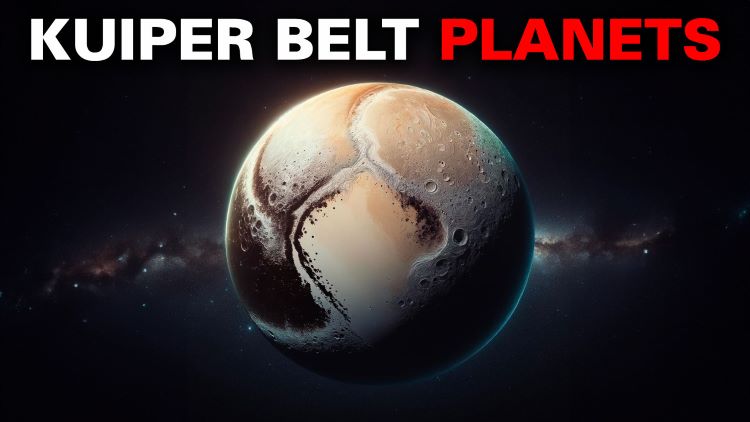A recent study published in The Astrophysical Journal Letters investigates the potential existence of Mars-sized free-floating planets (FFPs)—also known as rogue planets, starless planets, and wandering planets—that could have been captured by our Sun’s gravity long ago and orbit in the outer solar system approximately 1,400 astronomical units (AU) from the Sun. For context, the farthest known planetary body in the solar system is Pluto, which orbits approximately 39 AU from the Sun, and is also part of the Kuiper Belt, which scientists estimate extends as far out as 1,000 AU from the Sun.
This study comes as scientists currently estimate that billions, if not trillions, of FFPs could exist within our Milky Way Galaxy, with a recently submitted study using data from NASA’s James Webb Space Telescope (JWST) to identify 540 potential Jupiter-sized rogue planet candidates, with some hypothesized to be pairs of rouge planets, also called binary rogue planets. This was followed up by another recently submitted study that investigated the origin and evolution of those binary rogue planets, as well. Scientists currently hypothesize that rogue planets are formed from two scenarios: As part of their own solar system but are then somehow ejected into the cosmos, or they form in isolation. But what is the significance of studying free-floating planets, overall?
“There are three interesting areas of astrophysics that we can learn about from free-floating planets,” Amir Siraj, who is a PhD student in the Department of Astrophysical Sciences at Princeton University and sole author of the study, tells Universe Today. “The first is planetary system formation — free-floating planets are ostensibly byproducts of the planetary system formation process, so studying them can help illuminate how planetary systems like our own came to be. The second is habitability — free-floating planets may greatly outnumber bound planets, so if any fraction of them have regions with energy budgets that can support liquid water, free-floating planets could collectively represent an important swath of habitable real estate in the universe. The third is dynamical interactions with stars and planetary systems — since free-floating planets are not bound to any particular star, they roam the galaxy and can have dynamical interactions with many different stars and planetary systems.”
It was this third area that Siraj tells Universe Today he used as influence for this study, as he asked the probability of FFPs potentially being captured by our own solar system throughout its approximate 4.5-billion-year history.
For the study, Siraj used computer models to simulate the potential for FFPs being captured in the outer solar system while incorporating a myriad of factors, including semimajor axis, eccentricity, and observation times of FFPs. After conducting approximately 100,000,000 simulations, the results indicate the potential for the existence of a Mars-sized, or even a Mercury-sized planetary body somewhere in the outer solar system approximately 1,400 AU from the Sun, with Siraj noting in the study the distance could range between 600 to 3,500 AU. But what is the significance of a terrestrial planet so far out in the outer solar system as opposed to a gas giant planet?
“Since this planet would be a former exoplanet, studying it in detail would reveal a wealth of information about how planets form around other stars,” Siraj tells Universe Today. “The fact that it’s a terrestrial planet means that its surface is probably rocky — which is very exciting because it means that by studying its surface, we could learn about the habitability of terrestrial exoplanets in general.”
Siraj recommends in his study that future work could include gaining greater understanding of how rogue planets are captured in the first place, along with investigating observational tests to identify where to look in the sky for rogue planets, as well. He also notes how microlensing has become the preferred method in identifying rogue planets based on past studies.
What new discoveries will scientists make about rogue planets in the coming years and decades? Only time will tell, and this is why we science!
As always, keep doing science & keep looking up!

